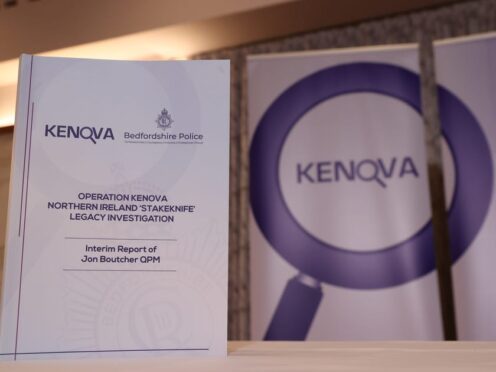
The 208-page Operation Kenova interim report has laid bare details about the shadowy world of state agents operating within paramilitary groups during the Troubles.
Kenova looked at 101 murders and abductions linked to the IRA unit responsible for interrogating and torturing people suspected of passing information to the security forces during the conflict.
It focused on Stakeknife, the Army’s prized spy within the IRA’s so-called “nutting squad”.

Here are some of the seven-year investigation’s main findings:
– Stakeknife was involved in “very serious and wholly unjustifiable criminality, including murder”.
– No confirmation that Stakeknife was the late Freddie Scappaticci from west Belfast. However, it confirms Scappaticci was arrested as part of the Kenova operation and prosecutors were examining evidence of serious criminality against him at the time of his death at the age of 77 in 2023.
– It dismisses claims Scappaticci might still be alive.
– Government policy of neither confirm nor deny (NCND) in relation to the identity of state agents prevented Operation Kenova from naming Stakeknife.
– NCND policy should be reviewed amid claims the “absolutist” adherence to it by the UK authorities has potentially cost lives and prevented criminals facing justice.
– UK and republican leadership should apologise to the victims of the IRA internal security unit – the state for its failings around intelligence and agent handling, and republicans for the IRA murders of suspected informants and the subsequent hostile treatment of their loved ones.

– Claims Stakeknife saved hundreds of lives are “fairy tales”. Information provided by the agent likely saved lives in the high single figures or low double figures.
– It was probable the running of the agent resulted in more lives being lost than saved.
– A lack of legal framework to govern the use of agents during the Troubles created a “maverick culture” where agent handling was considered a high-stakes “dark art” that was practised “off the books”.
– Security forces repeatedly withheld and did not action information about threats to life, abductions and murders in order to protect agents from compromise.
– The use of agents undoubtedly saved lives during the Troubles. However, there were occasions when preventable crimes were allowed to happen and went unsolved as a result of efforts to protect agents.
– It identified several cases of murder where the security forces had advance intelligence but did not intervene in order to protect sources.
– Review and reform of justice system in Northern Ireland, including resourcing of NI Public Prosecution Service, should be undertaken to speed up progress of legacy cases.
– June 21 should be designated as a day of reflection each year for all the lives lost during the Northern Ireland Troubles.

Enjoy the convenience of having The Sunday Post delivered as a digital ePaper straight to your smartphone, tablet or computer.
Subscribe for only £5.49 a month and enjoy all the benefits of the printed paper as a digital replica.
Subscribe